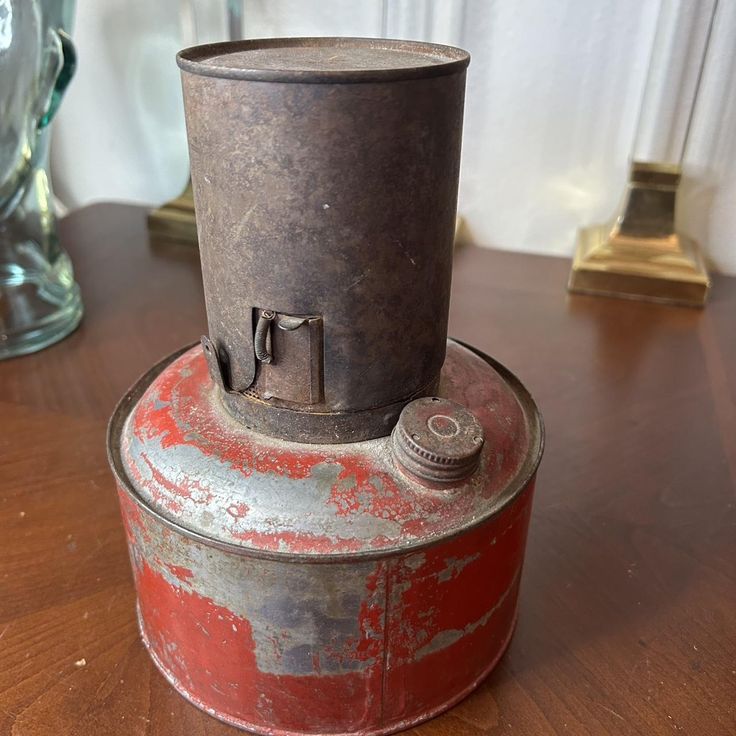Younger generations might glance at an old, soot-stained metal object and scratch their heads, wondering what it could possibly be. But if you recognize it instantly—the chimney-like top, the diesel or kerosene scent clinging to the metal—you’re likely from the golden generation, a time when farming meant grit, not gadgets. That object is a smudge pot, and before farming was transformed by apps, automation, and satellites, these humble devices were the frontline defense against nature’s icy wrath. In orchards across the country, especially in colder regions, smudge pots were once indispensable tools used to shield crops from frost damage. These metal canisters burned oil-based fuels and emitted a thick smoke and radiant heat that blanketed orchards on freezing nights. The warmth protected tender fruit blossoms from frostbite, while the smoke trapped heat near the ground, preventing temperatures from dipping too low around the trees.

Back then, there were no frost alarms or notifications pinging your phone. It was all about experience, instinct, and staying one step ahead of Mother Nature. When the forecast looked grim—or when a chill set in unexpectedly—farmers would hustle out to the fields under the cover of night, setting smudge pots ablaze one row at a time. Sometimes there were hundreds to light, and it had to be done quickly. Picture acres of orchard trees glowing in flickering orange light, smoke rising like mist into the cold, dark sky. These weren’t peaceful nights—they were battles for survival. A single frost could destroy a year’s harvest, wiping out a family’s income and putting their farm’s future at risk. The smudge pot wasn’t just a heater; it was a shield. And for the men and women who lit them, each flame meant one more chance to protect what mattered most.
For those who lived it, the memory is as vivid as ever: the bitter sting of icy wind on your cheeks, the crunch of frozen soil underfoot, the acrid scent of fuel clinging to your jacket, and the low hum of pots roaring like miniature dragons in the dark. It was dirty, back-breaking work—your hands would be coated in grime, your boots soaked, your clothes heavy with the smell of smoke—but there was dignity in it. This wasn’t done for applause or recognition. It was done out of necessity, for the farm, for the family, for the future. Over time, the use of smudge pots began to decline. Rising fuel costs, environmental regulations targeting smoke pollution, and the development of modern frost-fighting technologies led to their gradual disappearance. Today, wind machines that circulate warmer air across orchards, overhead sprinkler systems that insulate crops with a fine layer of water, and digital monitoring systems provide cleaner and more efficient solutions.
Still, something’s missing in these modern methods. They lack the raw, hands-on spirit that smudge pots embodied. Back in the day, it wasn’t unusual for grandfathers to teach their grandsons the art of lighting and placing smudge pots just right—strategically spacing them to protect the most delicate trees, or walking the rows and feeling the temperature drop in their bones before any thermometer could detect it. Smudge pots symbolized resilience, tradition, and sheer willpower. Although rare today, they haven’t completely vanished. Some small farms still rely on them when newer systems are too expensive or fail during extreme cold snaps. Others have repurposed them—transforming them into rustic garden lights, outdoor heaters, or vintage lawn ornaments. For collectors, they’re more than old relics; they’re pieces of living history.
To the younger crowd, smudge pots might seem like something out of a movie set, a curious oddity from a bygone era. But for those who’ve stood in those cold fields, watching the smoke rise while tending the flames, the memory is something much deeper. It’s a flashback to nights spent fighting not just for fruit, but for a way of life built on hard work and hope. So if you see a smudge pot and immediately know what it is, you’re not just identifying an old farming tool—you’re remembering a legacy. You’re honoring a chapter in history where survival meant lighting a fire, keeping it burning, and refusing to give up. It’s the story of a generation that knew the value of sweat, sacrifice, and smoke—and that’s a legacy worth remembering.





